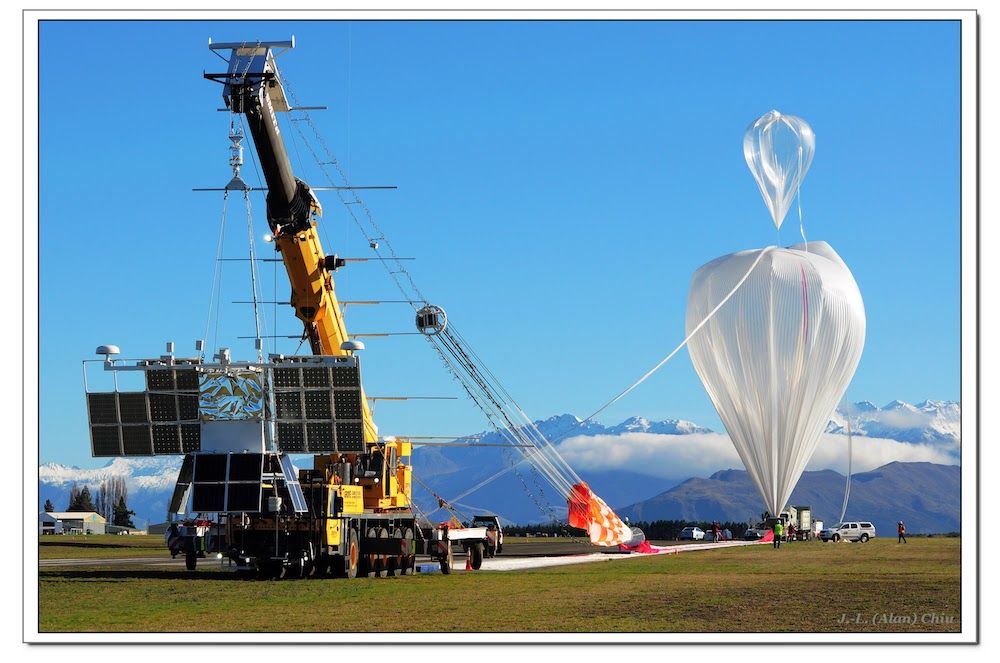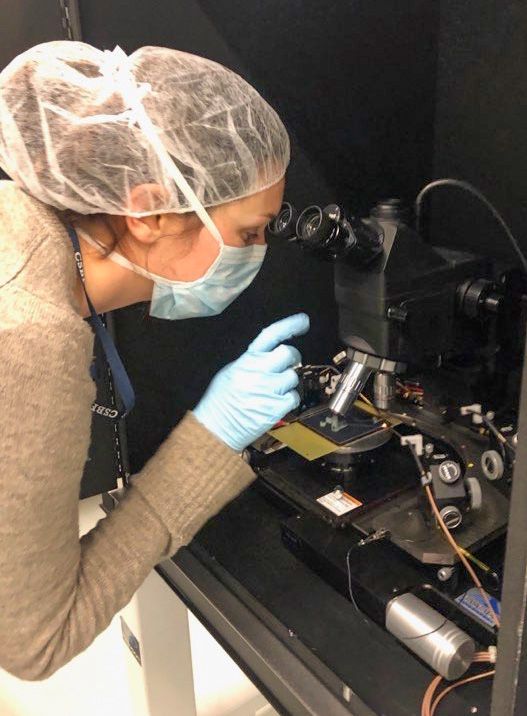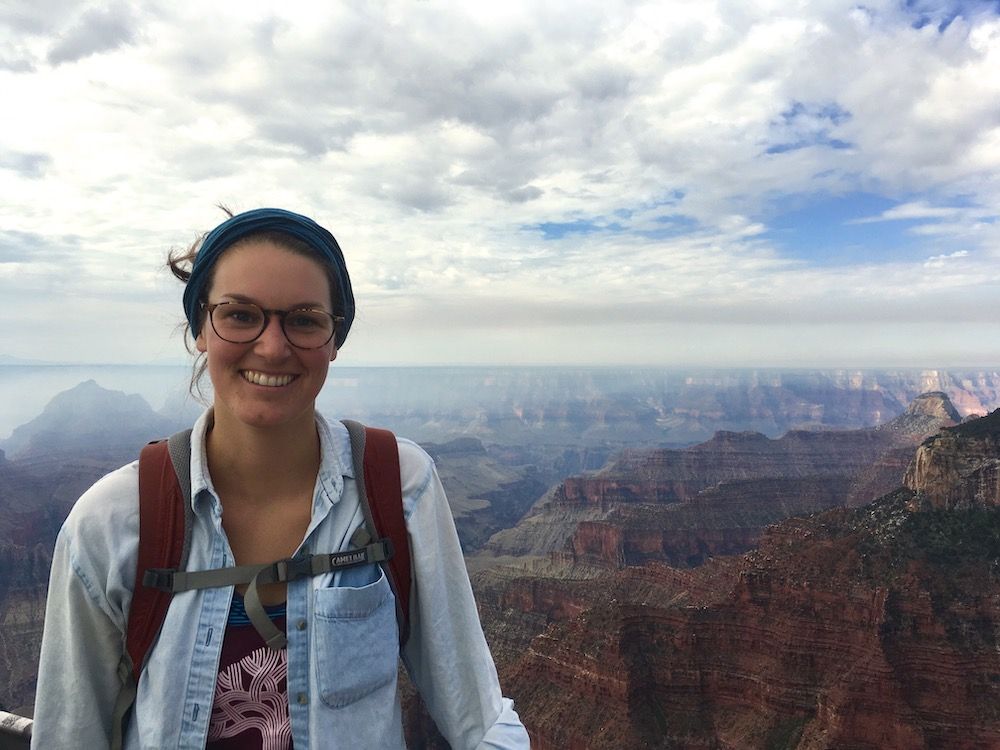Early Career Scientist Spotlight
Dr. Carolyn Kierans
High-Energy Astrophysicist
Astroparticle Physics Laboratory
What is your research focus?
My research focuses on gamma-ray astrophysics. Questions about stars and the Galaxy are uniquely accessible through measurements of characteristic gamma-rays emitted from the radioactive decay of unstable elements created through the life of stars in our Galaxy. However, this range of gamma-ray energies, specifically the MeV regime, is relatively unexplored and novel new telescopes are needed to progress in this field. In this vein, I predominately design and develop new gamma-ray imaging telescopes. This includes testing detectors in the laboratory, calibrating new instruments, and performing demonstrations of new technology with high-altitude balloon flights.
What science question intrigues you the most?
The mystery of Galactic positrons is one of the longest standing open questions in gamma-ray astrophysics. When electrons come into contact with their anti-matter counterpart, the positron, they annihilate and emit two characteristic gamma-rays with an energy of 511 keV (this is based off of Einstein’s mass-energy equivalence, i.e. E = mc2). This well-known signature at 511 keV was detected coming from the direction of the Galactic center in the 1970s when the first gamma-ray telescopes were launched on high-altitude scientific balloon, revealing a strong source of positrons in our Galaxy. But even after close to 50 years of research, we haven’t fully resolved the source of these positrons. The simple and somewhat boring answer to this mystery is that these positrons could be produced through standard stellar evolution; however, the models are not consistent with the observations, so some researchers believe the source of positrons could be something exotic such as dark matter. Understanding the source of Galactic positrons was the focus my thesis research and I’m currently involved in a number of space missions that aim to shed light on this puzzling question.

Credit: Alan Chiu
Are you involved in any upcoming space missions?
For my PhD, I worked on a balloon-borne gamma-ray telescope called the Compton Spectrometer and Imager (COSI; see the accompanying figure). While the balloon-borne instrument was a resounding success, and we were able to report some compelling science, the end goal of the balloon mission was to develop and mature the COSI gamma-ray telescope technology so that it could one day be launched into space. The team is now getting that opportunity and we are excitedly working towards launching an upgraded version of COSI as a satellite. This will not only allow us to observe fainter objects because we are out of Earth’s atmosphere, but satellites allow for years of observations, as opposed to the weeks achievable from a balloon platform.
The focus of my research since coming to Goddard has been on the All-sky Medium Energy Gamma-ray Observatory (AMEGO). This mission concept is a much larger scale than COSI and looks a bit further into the future. At this moment, we are waiting to hear back from the Astro2020 Decadal Survey as they determine the priorities for Astrophysics in the next decade, but if AMEGO were to be selected, it would provide groundbreaking capabilities in gamma-ray astrophysics. In the meantime, my team is focused on building up a prototype version of AMEGO telescope technologies. We aim to fly this instrument on a balloon to demonstrate the functionality, much like we did for the COSI mission.
What do you enjoy the most about your job?
I really enjoy working on new mission concepts. You get to ask yourself: What type of measurements would I like to make to further understand our Universe? And then work through the stimulating task to determine the detailed telescope design needed to achieve the goals you set forth. At Goddard, this experience is even more rewarding because, as scientists, we get to work with the world-class Goddard engineers to design and develop a compelling and competitive instrument design.

What is one of your favorite moments in your career so far?
Though it’s hard to choose just one, I would say my favorite moment in my career so far was the successful launch of the COSI balloon instrument. I was part of a small team, and after years of hard work, which included a failed flight in Antarctica the year before, we finally were ready for the balloon launch. The instrument performed perfectly in flight, and we got some amazing science data. Thinking back, I can still clearly remember the sound of the balloon’s plastic rippling in the wind as it ascended during the launch, and I feel an immense feeling of accomplishment with the memory. Also, the fact that Wanaka, New Zealand is not a bad place to get “stuck” for 3 months of work might have added to this being such a great career moment.
What do you like to do in your free time?
I love to spend my free time outside. I am an avid hiker and I love camping in the mountains in West Virginia. I also like taking advantage of the great biking trails around the Washington D.C. Metropolitan Area. When the weather doesn’t permit exploration of the outdoors, I am usually curled up at home with a novel.
What early career advice do you have for those looking to do what you do?
If you want to work on instrument development, then my best advice would be to get involved in a balloon mission. Scientific balloons give a complete educational experience. With the timeline of a balloon project being commensurate with the academic degree timeline, and with balloon missions allowing for a higher acceptable risk, students are able to play a role in all aspects of a balloon project: from hardware and software development, to group leadership. These projects are most accessible to graduate students, but there are a number of programs that focus on educating high school students, and younger, through high-altitude balloons. Sounding rockets and CubeSats also provide a similar training opportunity for the next generation of scientists and engineers.
Biography
Home Town:
Vancouver, Canada
Undergraduate Degree:
B.Sc., Physics; Simon Fraser University, Vancouver, Canada
Post-graduate Degrees:
M.Sc.: Physics; University of Toronto, Toronto, Canada
Ph.D.: Physics; University of California, Berkeley

